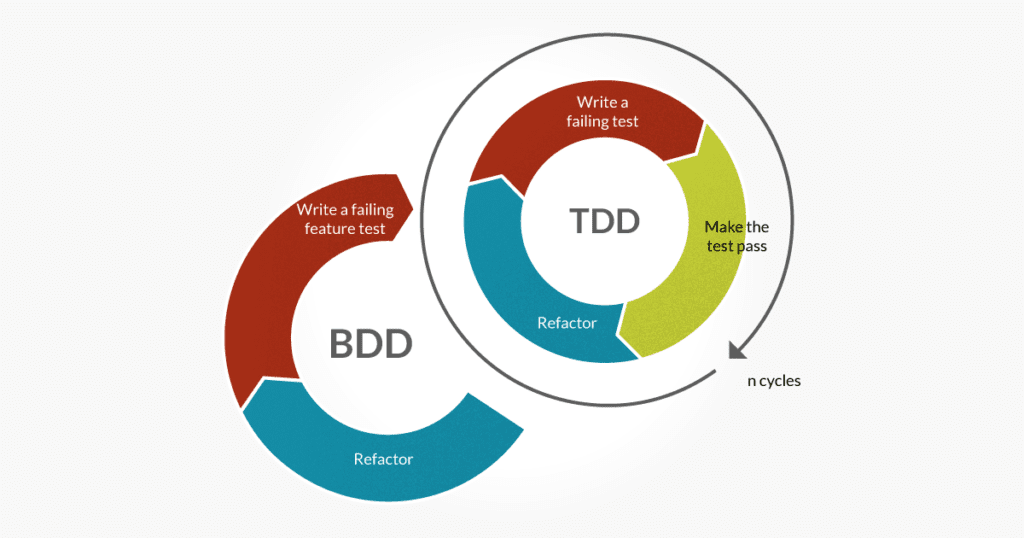What's the difference between TDD and BDD?
byGink▻ Sat, 05 Feb 2022
TDD is a software development process where developers write automated tests before they write the code. The tests define the expected behavior of the code and provide a framework for writing it. Once the tests have been written, the developer can then write the code to make the tests pass. TDD emphasizes the design of code through the writing of tests, ensuring that the code is flexible, maintainable, and less prone to bugs.
On the other hand, BDD is a software development process that focuses on the behavior of the code from the perspective of the end-user. BDD uses human-readable language to define the expected behavior of the code, making it easier for stakeholders who may not have a technical background to understand the tests. The tests are then automated, and the code is written to make the tests pass. BDD prioritizes collaboration between developers, stakeholders (testers / QA...), and business owners to ensure that the code meets the needs of the end-user.

Another difference between TDD and BDD is their approach to testing. TDD focuses on testing individual units of code, such as functions or methods, while BDD focuses on testing the behavior of the code as a whole, taking into account the interactions between different units. BDD tests are written in a way that makes it easier to understand the intended behavior of the code, making it easier for stakeholders to validate that the code meets their expectations.
Summaries
TDD and BDD are both valuable software development methodologies that aim to improve the quality of code and reduce the number of bugs by using automated tests. Both TDD and BDD tests are typically written by developers, with TDD tests emphasizing the design of code and BDD tests prioritizing collaboration with stakeholders. The choice between TDD and BDD will depend on the specific needs and goals of a project.
© 2016-2025 GinkCode.com